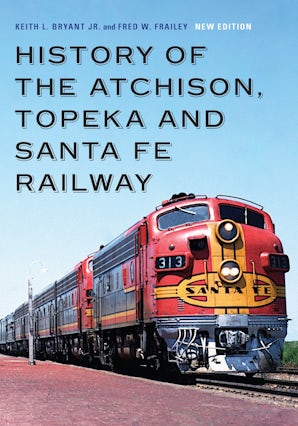"The totality of Bryant and Frailey's work impresses upon the reader just how much solid leadership and exceptional vision are required in the creation and management of a giant undertaking like the ATSF. Cyrus Holliday would be proud of where his vision ultimately led and the important impact it has had on the development of the United States."—Mark Janzen, Nebraska History
"If you want an interesting look at railroading plus the social, financial, and political times over 130 years of America, consider this well-researched and documented book."—Stan Moore, Denver Posse of Westerners
"Keith L. Bryant Jr. and Fred W. Frailey's History of the Atchison, Topeka and Santa Fe Railway is a well-researched and thorough account of the Atchison, Topeka and Santa Fe Railway (ATSF) that is beautifully written and accessible to readers."—Benjamin J. Bax, Chronicles of Oklahoma
“Readers will enjoy this comprehensive history of the Santa Fe, one covering more than 125 years. This wonderfully detailed book allows readers to gain a real feeling for this railroad and fills an enormous void in the literature of railroad company histories.”—H. Roger Grant, Kathryn and Calhoun Lemon Professor of History at Clemson University
“This is the best-documented book-length history of the Santa Fe Railway. Keith Bryant is a longtime historian of American railroading, and his collaborator, Fred Frailey, is widely regarded as one of the foremost observers of the modern industry. The history is presented chronologically and is well organized. It is accessible for a popular audience, even as it exhibits high standards of scholarship.”—Peter A. Hansen, longtime editor of Railroad History and correspondent for Trains magazine
